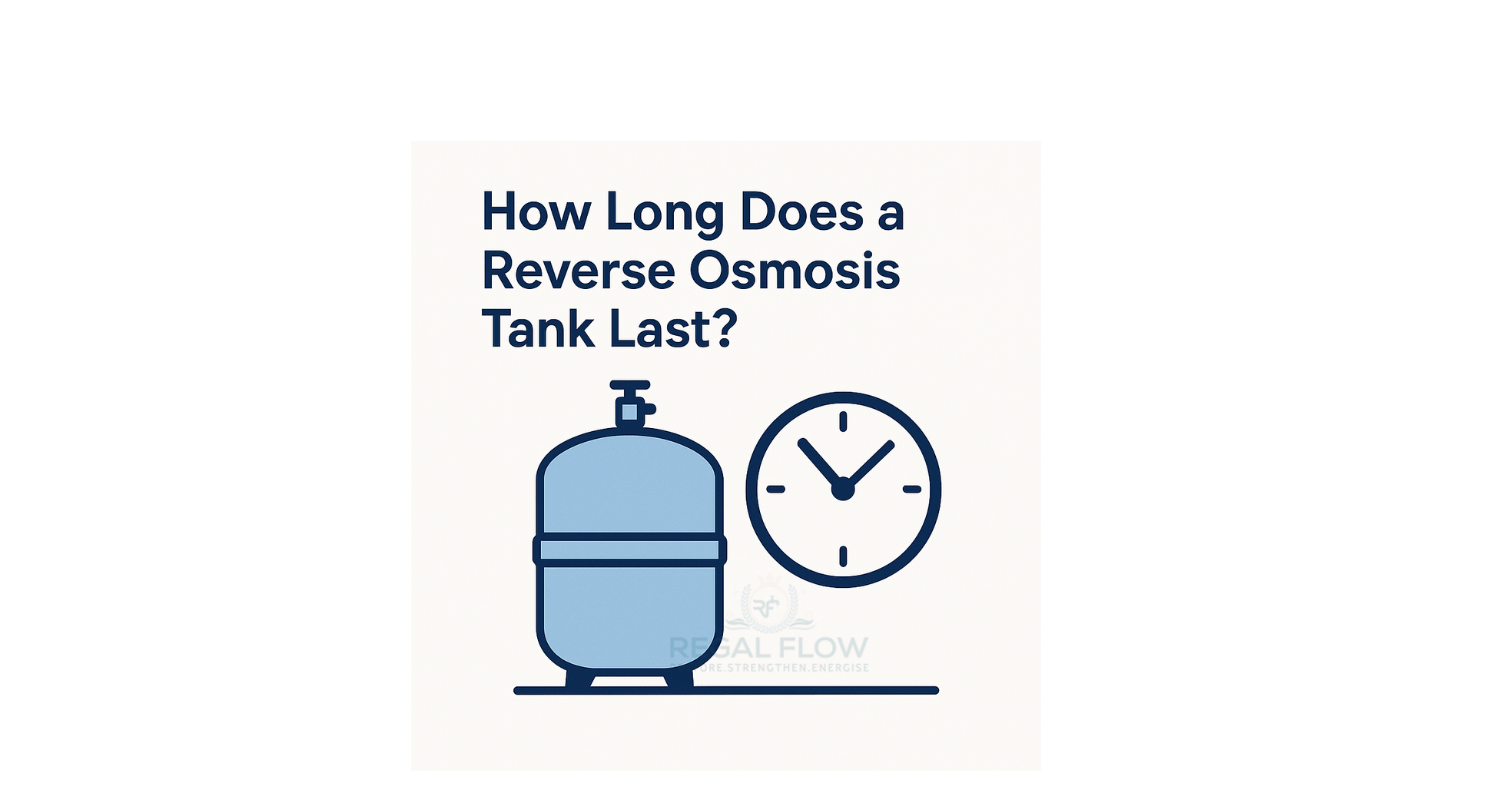
How Long Does a Reverse Osmosis Tank Last? Lifespan, Signs & Care Tips
Your reverse osmosis tank won’t last forever—sorry, even water tanks don’t get immortality. Short answer? About 3–5 years. Factors like water quality, maintenance, and usage all play a part. In Reverse Osmosis: Specialised Topics and Advanced Insights, we explore how countertop dispensers and reverse osmosis systems impact tank lifespan—and how to keep your water crisp, clean, and your tank ticking longer.
Understanding the Role of the RO Storage Tank
How the Tank Stores Purified Water
If your RO system is the brain, the tank is its water bank. After water goes through all that intense filtration, it doesn’t just hover around waiting to be poured. It gets stored in the tank, under pressure, so you can enjoy clean water on demand. Whether you’re topping up a glass or filling your countertop dispenser, the tank makes sure it’s ready. Inside, there’s a clever rubber bladder. It keeps water and air separate and helps the system push water out quickly when you twist the tap.
Materials Used in RO Tank Construction
RO tanks are built to be tough. Most are made from either high-grade plastic or stainless steel. Both have their perks. Plastic tanks are light, easy to move and don’t rust. Stainless steel ones are heavier but often last longer. Inside, both usually have a food-safe lining—typically butyl rubber or polypropylene—to keep your water clean and stop it tasting odd. It’s a bit like choosing between a plastic water bottle or a steel thermos. Both do the job, but one handles knocks and wear a bit better.
Typical Life Expectancy of a Reverse Osmosis Tank
Average Lifespan Ranges (Based on Material and Quality)
Here’s where things get interesting. Depending on the materials and quality, most RO tanks live for:
-
Plastic tanks – around 3 to 4 years
-
Stainless steel tanks – closer to 4 to 5 years
-
Top-quality branded tanks – sometimes up to 5 years (or even a touch more)
In short, buying cheap often means buying twice. Spending a little more upfront can keep your tank working longer—and save you faffing around with replacements.
Factors That Can Affect RO Tank Lifespan
Water Quality and Sediment Build-up
Hard water is a tank’s worst nightmare. If your water’s full of minerals like calcium or magnesium, it can build up inside the tank and pipes, much like limescale in your kettle. Over time, this gunk reduces efficiency and stresses out the system. If you live somewhere with hard water (like much of the UK), using a water softener or pre-filter can help keep things cleaner.
Internal Bladder Material and Quality
The internal bladder is what keeps the water pressurised and flowing properly. Cheap bladders (poor-quality rubber) can crack, lose flexibility or even leach odd tastes into your water. Think of it like an old bicycle tyre—over time it perishes. Investing in tanks with butyl rubber bladders helps dodge these issues.
Water Pressure Fluctuations
Your home’s water pressure plays a bigger role than you might think. Wild swings—too high or too low—can stress the bladder and seals. If you’ve ever heard pipes clanging when you turn the tap on fast, you’ll know what I mean. Installing a pressure regulator keeps things steady and reduces strain on your RO system.
Physical Damage or Stress
We’ve all dropped something we shouldn’t have. Tanks can get banged around during installation or maintenance, and this can crack plastic or dent metal. When fitting or moving the tank, handle it gently. Treat it like you would a nice vase—not like a football.
Maintenance Practices
Just like your car needs a service, your RO system does too. Forgetting to change filters or clean the system allows sediment and bacteria to sneak in. A good rule? Change filters every 6–12 months and sanitise the system yearly. Your water (and your tank) will thank you.
Signs That Your RO Tank May Need Replacing
Reduced Water Storage Capacity
If you’re filling up your glass and running out of water faster than usual, it’s a sign something’s up. A failing bladder can’t hold as much water, and you’ll notice it quickly.
Slow Water Flow from the Faucet
Instead of a steady stream, you get a sad dribble. Often, this means internal pressure is gone—usually from a damaged bladder or clogging inside the system.
Leaks or Cracks in the Tank
If you spot damp patches under the sink or water pooling around the tank, check closely. Visible cracks or weeping joints usually mean it’s time for a new tank.
Unusual Taste or Odour in the Water
If your water starts tasting like rubber, metal or even mouldy, something inside has likely broken down. Your internal bladder could be degrading or bacteria may have made themselves at home.
Tips for Extending the Life of Your RO Tank
Regular System Maintenance and Filter Changes
Stay on top of filter swaps and clean the system each year. It prevents grime building up and keeps everything ticking along smoothly. I like to pop a reminder in my calendar—less chance of forgetting that way.
Avoiding Extreme Water Pressure
Keep household water pressure between 40–80 psi. If you’re not sure what yours is, a simple pressure gauge can tell you. A pressure regulator is a smart investment if your mains supply tends to spike.
Gentle Handling of the Tank
When installing, cleaning or moving your tank, avoid knocks or drops. Use hand-tight pressure on fittings—don’t wrench them tight. A cracked tank is an expensive mistake.
Conclusion: Maximising the Lifespan of Your Reverse Osmosis Tank
While your RO tank isn’t immortal, you can certainly stretch its lifespan with the right care. Choose quality, stay on top of maintenance, and keep an eye out for warning signs. That way, your Countertop Dispensers and Reverse Osmosis system will keep serving crisp, clean water for years—no nasty surprises, no emergency replacements.
More Reverse Osmosis info we think you'll love
Reverse Osmosis Filter Replacement Service
Reverse Osmosis Power Consumption
Reverse Osmosis System Connections
Reverse Osmosis System Water Quality
When to Change Reverse Osmosis Filters
Reverse Osmosis Countertop System
Tankless Reverse Osmosis System
Reverse Osmosis Water Filter for Aquarium
Can Reverse Osmosis Remove Bacteria?
How to Fix Low Water Pressure in a Reverse Osmosis System


Leave a comment